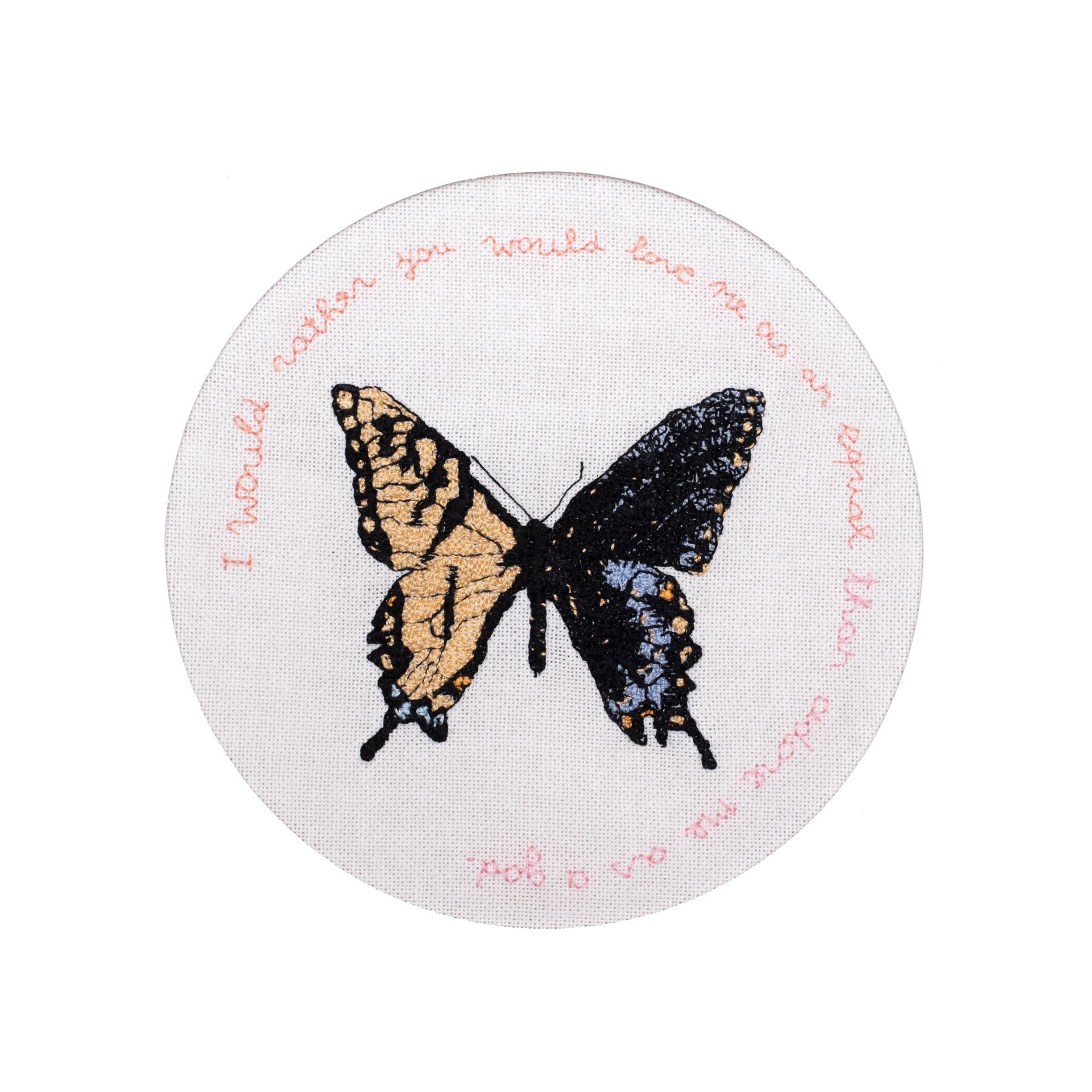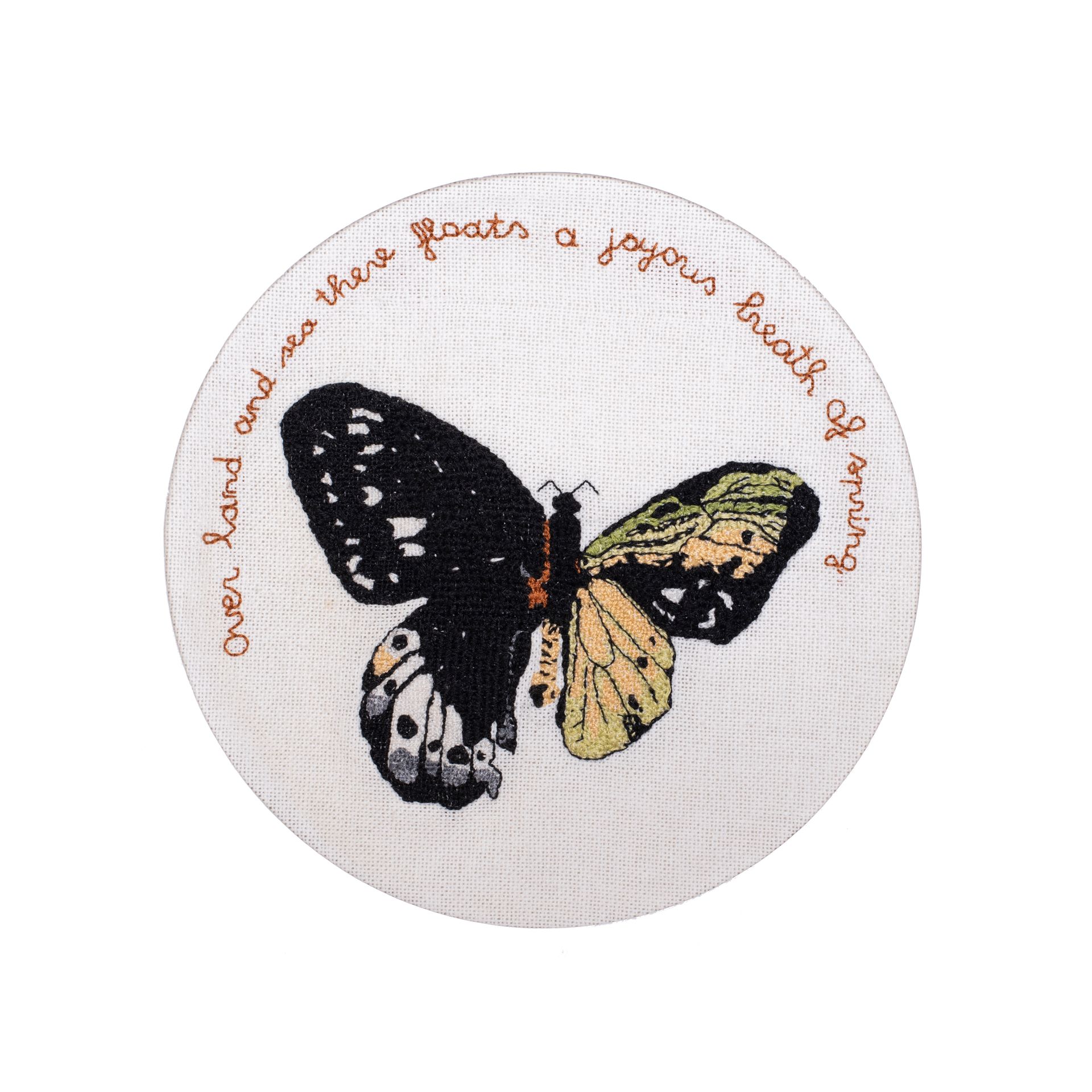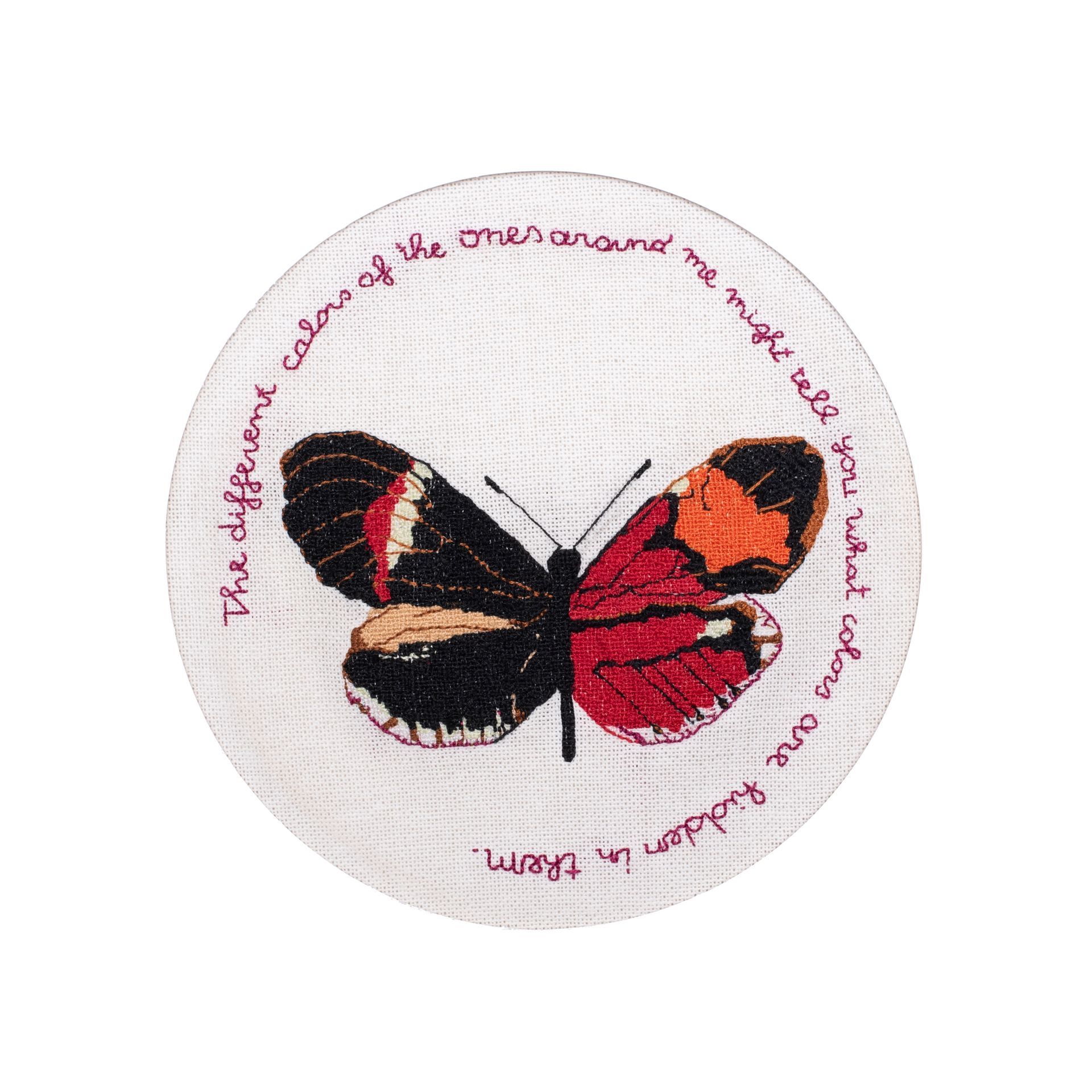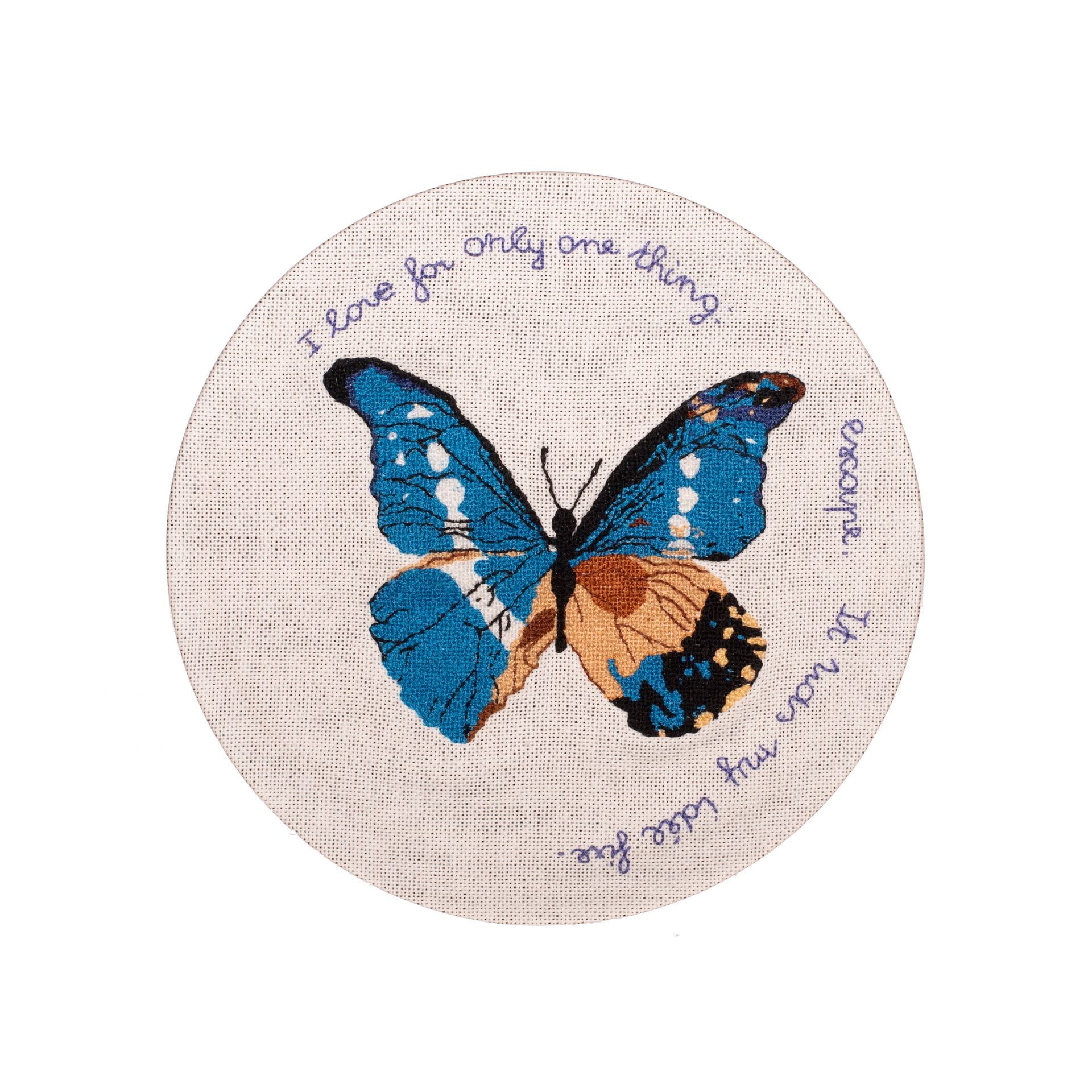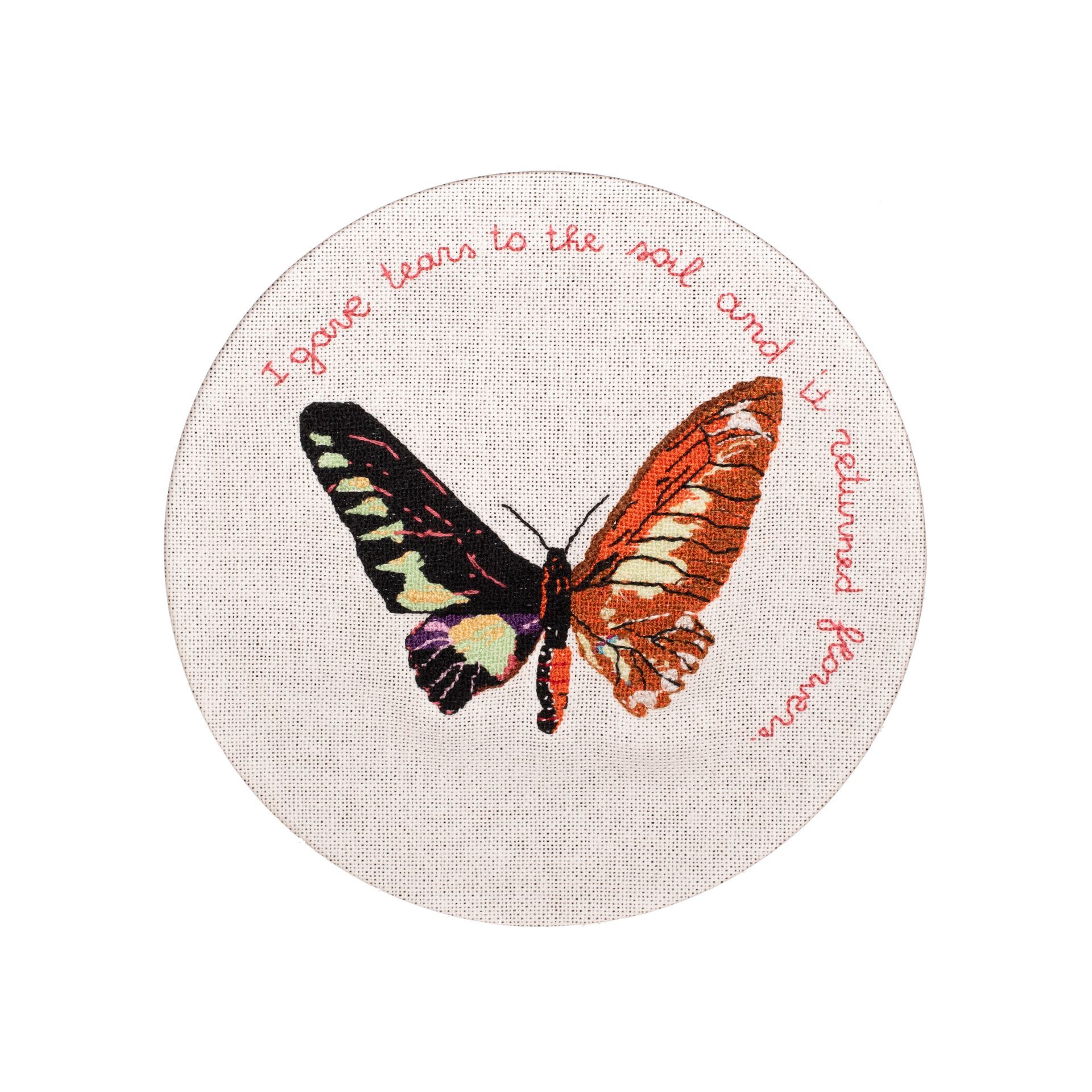PLATE 1: I would rather you would love me is as an equal than adore me as a god.
PLATE 2:
Over land and sea there floats a joyous breath of spring.
PLATE 3: The different colors of the ones around me might tell you what colors are hidden in them.
PLATE 4: I love for one thing: escape. It was my idée fixe.
PLATE 5: I gave tears to the soil and it returned flowers.
Hand embroidery with polyester thread on cotton, Ø 17,5cm, unique works
“My collection” (2024-ongoing) brings together a series of embroideries made by the artist. They portray bilateral butterflies, which have a symmetrical
separation of the two sexes. The titles of the plates refer to classic Western literary works in which butterflies are the antagonists. Significantly, these are
also stories about the oppression of women and minoritiesin society. The artist uses embroidery, a feminist tradition in textile arts.
She uses the needle to unravel patriarchal concepts of gender. Every stitch becomes an act of subversion and resistance.

Still moving image of a sad girl (2025)
Videowork (3:19 min)
Still moving image of a sad girl (2025) is my first video work. It originates from a 35mm photograph of a friend, inspired by the melancholic
female figures in Jean-Luc Godard’s films and their lingering presence in contemporary culture. The archetype of the “sad girl” turns inner
struggle into performance, where distress, passivity, and vulnerability are aestheticized and made desirable. Through a digital rostrum
technique, the still image slowly shifts into motion, blurring the line betweenstill and moving image and compelling the viewer to reflect on how women are portrayed in art and media. Echoing a sense of passivity similar to some of Sofia Coppola’s sad girls, camera mechanics resonate.
Gun shots might be mistaken for shutter speed. Or just as well a heartbeat at the same time. Terms like intimacy and violence might get mixed up
when we talk about image making, just like “shooting” an image and “taking” a picture are not the same thing.Ultimately, the work asks: does art reflect women as they are, or only the images projected onto them?
And perhaps, in their gaze, we may still glimpse a trace of hope—a quiet will to resist?
